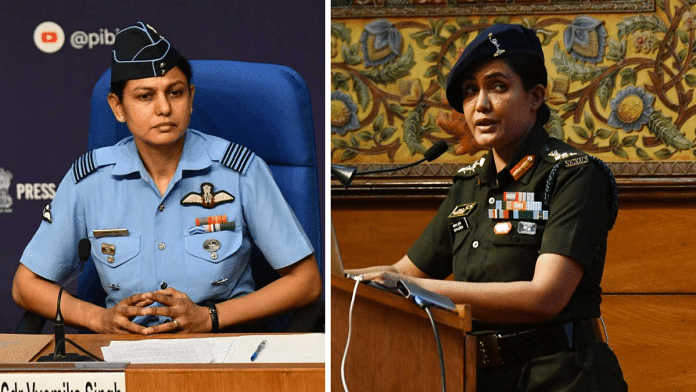After 26 lives were stolen in Pahalgam, India responded with Operation Sindoor—an operation named not for war, but for memory. The name, almost immediately, became a talking point. And it felt like a thoughtful choice. Sindoor isn’t just a symbol of marriage—it carries with it the weight of a life shared, of everyday routines, of futures imagined together. In choosing that name, it was as if the country was saying: this wasn’t just about 26 deaths. It was about the people they left behind, and the quiet, invisible ways their lives were torn apart, too. It was a reminder that those killed weren’t just 26 individuals—they were sons, husbands, brothers. And when terror takes one person, it shatters many others around them. Naming the operation this way was a recognition that grief doesn’t end at the victim—it stays, and it spreads.
Alongside the name of the operation, what’s also drawing attention across India is who was chosen to speak about it. Colonel Sofiya Qureshi from the Indian Army’s Signal Corps, and Wing Commander Vyomika Singh, a helicopter pilot in the Indian Air Force, led the official briefing. Both have had long, respected careers in the Armed Forces. But their presence at the forefront of Operation Sindoor was more than just a professional assignment. It was a quiet statement against the ideologies that divide people by identity. And it affirmed the idea that unity isn’t just something we say, but something we live.
In a way, this was the most fitting response to what happened in Pahalgam. Terrorists killed innocent people for being Hindu. That was the mindset—that someone’s religion makes them a target. And then, days later, the world sees Colonel Qureshi and Wing Commander Singh standing side by side, briefing the media on Operation Sindoor. Not making speeches, just doing their job. But even in that, there was something deeply powerful. It was a reminder that India, for all its faults, still holds space for many identities to exist—and lead—together. That moment didn’t need to be explained. It simply was. And it stood against everything that hateful ideology believes in.
Qureshi and Singh weren’t just answering the terrorists who killed to spread terror and create divide on religious lines. They were also answering the ones within India who, in different ways, keep feeding that same communal divide. It was a reminder that the real fight isn’t just across the border—it’s also here, in how we choose to see each other. Operation Sindoor, thus, wasn’t just a strike across the Line of Control. It was an act of defiance against everything that wants to split this country from the inside. And that’s a real victory for the idea of India: countering exclusion with inclusion, and standing united in our fight for justice through a shared sense of belonging.
Also read:
Two women, two identities
The fact that two women led the joint briefing wasn’t just a matter of representation—it was a strong response to the terrorists themselves. The attackers reportedly spared women and children, telling them to “go and tell Modi what happened”. That was meant as a threat. But what they probably didn’t expect was that it would be women standing at the front, delivering the response. Not just witnessing the violence, but carrying the weight of justice too. It was symbolic, yes—but it also felt deeply personal. A message that women don’t just survive the aftermath; they can also shape what comes next.
It’s easy to talk about justice in numbers—count the dead, count the strikes, count the days. But sometimes, justice is also in the small things that follow. In who gets to speak. In who refuses to be reduced to fear. In the way the country chooses to respond—not just with firepower, but with clarity about who we are, and who we refuse to become.
Operation Sindoor was a military response, but it was also something more. A reminder that the answer to hate isn’t just defence. Sometimes it’s dignity. Sometimes it’s just standing still, holding the line, and refusing to give in to the very divisions the attackers wanted to deepen. And in that sense, Colonel Qureshi and Wing Commander Singh briefing together said more than any statement could. Two women. Two uniforms. Two identities. Together, they became the image that stayed.
And maybe that’s the real message that day carried: the most powerful thing we can do in the face of hate and terror is to not become what it wants us to be.
Amana Begam Ansari is a columnist, writer, TV news panelist. She runs a weekly YouTube show called ‘India This Week by Amana and Khalid’. She tweets @Amana_Ansari. Views are personal.







So poetically described.
Thank you for highlighting that whereas a rogue Army Chief wanted to show toxic masculinity, India showed feminine dignity!